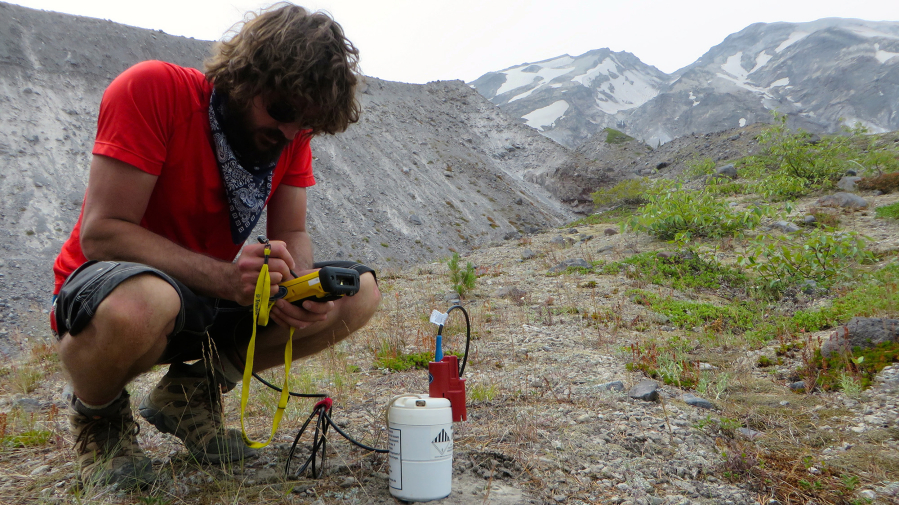Scientists have been listening to Mount St. Helens for decades, and yet the rumbling volcano still holds many secrets about its subterranean activities. However, a recent experiment using a new generation of highly sensitive seismometers might reveal more about what’s happening beneath the surface.
Last month, a team of seismologists from the USGS-Cascades Volcano Observatory, University of New Mexico, University of Oregon, University of Wisconsin-Madison, Cornell and Northwestern universities placed 140 temporary seismometers around the Loowit Trail, which circumambulates the volcano, at the lava dome that erupted in 2004 until 2008, the lava dome that erupted in 1980 until 1986, and the 1980 crater floor.
“That’s the area we’d like to focus on to understand better the structure of the volcano there and the different processes in the new dome and the old dome,” said Wes Thelen, a seismologist with the USGS-Cascades Volcano Observatory.
Mount St. Helens, already one of the world’s the most studied volcanos, is now host to the largest number of seismometers ever placed on a U.S. volcano.
Scientists hope that after sitting on the volcano and collecting data for about a month the seismometers will gather details about small-magnitude earthquakes and offer insights on the shallow plumbing network beneath the surface.
There’s a permanent array of seismometers sitting in various locations on St. Helens, but they’re spread too far apart and lack the subtlety needed to functionally detect the smaller, quieter movements happening beneath the surface.
Of all the signals they detect from the volcano, researchers are able to use roughly 10 percent of them, Thelen said.
“Especially rock falls, things that are making seismic noise but that are too small for the permanent network, that’s what we’re interested in shining some more light on,” he said.
But thanks to demands largely created by the oil industry, researchers are now able to get access to the more sensitive instruments, which can effectively amplify those background sounds.
The data will add to the body of knowledge amassed from the large-scale and recently completed iMUSH — imaging Magma Under St. Helens — experiment. That project looked much deeper into the volcano’s plumbing, but some of the knowledge gleaned from iMUSH inspired this most recent project.
“One of the guys who had a bunch of instruments up there in the initial part of the experiment found some interesting signals with the array he had out,” Thelen said. “He was able to say … some of the signals that look a lot like rockfall were actually in the volcano.”
Researchers will start collecting the 140 seismometers within the next couple weeks. They hope the information they gather will tell them about the processes leading to the earthquakes in the shallow chambers. But Thelen said they won’t be dismayed if it’s familiar background noise.
“Even if it’s background we still win,” he said. “There’s lots of background (signals) I’m interested in that we can’t access with the permanent network.”




